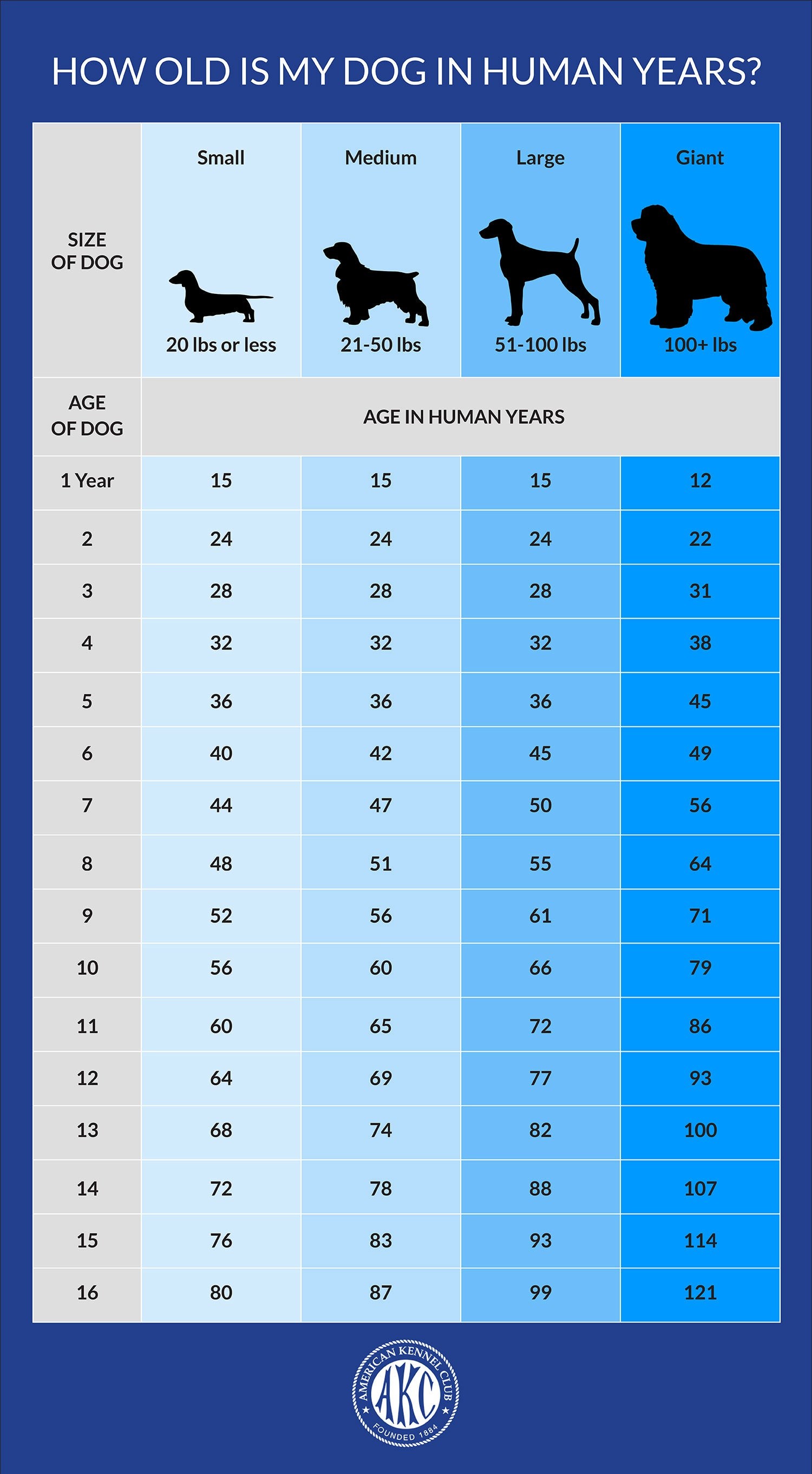Navigating the complexities of aging across species can be tricky, especially when trying to understand how dog years compare to human years. At COMPARE.EDU.VN, we provide a comprehensive breakdown to help you accurately assess your furry friend’s age in human terms, debunking myths and offering science-backed methods. Discover insightful comparisons and reliable resources to make informed decisions about your pet’s health and well-being.
1. The Myth of the Seven-Year Rule
The widely held belief that one dog year equals seven human years has been a common way to estimate a dog’s age in human terms since the 1950s. However, this simplistic calculation doesn’t accurately reflect the complex aging process in dogs. According to Kelly M. Cassidy, a curator at the Charles R. Connor Museum at Washington State University, this rule is far from precise.
1.1. Origins of the 7:1 Ratio
The 7:1 ratio likely originated from the observation that humans lived to about 70 years, while dogs lived to approximately 10 years. This led to the assumption that each dog year was equivalent to seven human years.
1.2. Marketing Ploy or Educational Tool?
William Fortney, a veterinarian at Kansas State University, suggests that the 7:1 ratio may have been a marketing strategy to encourage pet owners to bring their dogs in for annual check-ups. By emphasizing the rapid aging of dogs, veterinarians could promote the importance of regular health assessments.
2. A More Accurate Calculation: The AVMA Guidelines
The American Veterinary Medical Association (AVMA) provides a more nuanced guideline for converting dog years to human years, taking into account the varying rates of aging at different stages of a dog’s life.
2.1. The First Year
The first year of a medium-sized dog’s life is equivalent to approximately 15 human years. This rapid development phase includes significant growth and maturation.
2.2. The Second Year
The second year of a dog’s life equals about nine human years. During this period, dogs continue to mature physically and behaviorally.
2.3. Subsequent Years
After the first two years, each human year is approximately equal to five dog years. This rate is more consistent but still varies depending on factors like breed and size.
3. Factors Influencing a Dog’s Aging Process
Several factors influence how quickly a dog ages, making it challenging to provide a one-size-fits-all conversion from dog years to human years.
3.1. Breed Size
Breed size is a significant determinant of lifespan. Smaller dogs generally live longer than larger dogs. This is attributed to the faster aging process in larger breeds.
3.2. Genetics
A dog’s genetic makeup plays a crucial role in its overall health and longevity. Some breeds are predisposed to certain health conditions that can affect their lifespan.
3.3. Diet and Exercise
A balanced diet and regular exercise contribute to a dog’s overall health and can impact its aging process. Proper nutrition and physical activity help maintain a healthy weight and prevent age-related diseases.
3.4. Healthcare
Regular veterinary check-ups and preventative care can extend a dog’s lifespan. Early detection and treatment of health issues can improve a dog’s quality of life and longevity.
4. The Science Behind Aging in Dogs
Researchers are actively studying the aging process in dogs to better understand the factors that contribute to lifespan and overall health.
4.1. Canine Gerontology
Canine gerontology is a growing field of science focused on understanding and improving the aging process in dogs. Researchers aim to extend the time dog owners have with their pets and enhance the quality of their lives.
4.2. The Dog Aging Project
The Dog Aging Project is a comprehensive study investigating the aging process in dogs. Using geroscience research, the project aims to delay aging and promote healthy longevity in dogs.
5. Why Do Smaller Dogs Live Longer?
The phenomenon of smaller dogs living longer than larger dogs has puzzled scientists for years. Research is ongoing to understand the relationship between body mass and lifespan in dogs.
5.1. Accelerated Aging in Larger Dogs
Larger dogs tend to age at an accelerated pace, leading to shorter lifespans. Cornelia Kraus, an evolutionary biologist at the University of Göttingen in Germany, notes that “their lives seem to unwind in fast motion.”
5.2. Body Mass and Lifespan
Scientists have found that for every 4.4 pounds of body mass, a dog’s life expectancy decreases by about a month. The reasons behind this correlation are still being investigated.
5.3. Potential Explanations
Kraus suggests that larger dogs may be more susceptible to age-related illnesses and that the rapid growth of large dogs may increase the likelihood of abnormal cell growth and cancer.
6. The 2019 Epigenetic Clock Study
A 2019 study by researchers at the University of California San Diego proposed a new method for calculating dog age based on changes in DNA over time.
6.1. DNA Methylation
The study focused on DNA methylation, a process where methyl groups are added to DNA molecules, altering DNA activity without changing the DNA sequence itself. This process is used to study aging in humans through an “epigenetic clock.”
6.2. Research Methodology
The research team performed DNA sequencing on 104 Labrador Retrievers over a 16-year age range to compare their epigenetic clocks to those of humans.
6.3. The Formula
The study resulted in a formula for adjusting dogs’ ages to human years: human_age = 16ln(dog_age) + 31. This formula multiplies the natural logarithm of the dog’s age by 16 and adds 31.
6.4. Limitations
The study’s limitations include its focus on a single breed, the Labrador Retriever. Different breeds age differently, so the formula may not be universally applicable.
7. Historical Perspectives on Dog Years
The comparison of human and dog years has a long history, dating back centuries.
7.1. Cosmati Pavement in Westminster Abbey
In 1268, artisans creating the Cosmati Pavement in Westminster Abbey inscribed a prediction for Judgement Day that included a comparison of lifespans: “a hedge lives for three years, add dogs and horses and men, stags and ravens, eagles, enormous whales, the world: each one following triples the years of the one before.”
7.2. Historical Lifespan Estimates
According to this calculation, a dog lived to nine years, and a man to 80. These estimates highlight the historical interest in comparing the lifespans of different species.
8. Understanding Senior Dogs
As dogs mature and age, they exhibit unique characteristics and needs that require special attention.
8.1. Physical Changes
Senior dogs may experience physical changes such as graying muzzles, decreased energy levels, and mobility issues.
8.2. Health Considerations
Older dogs are more prone to age-related health conditions like arthritis, heart disease, and cognitive dysfunction.
8.3. Care and Support
Providing appropriate care and support for senior dogs includes regular veterinary check-ups, a balanced diet, gentle exercise, and a comfortable living environment.
9. Resources for Dog Owners
Numerous resources are available to help dog owners better understand and care for their pets at every stage of life.
9.1. American Kennel Club (AKC)
The American Kennel Club provides information on dog breeds, health, training, and responsible dog ownership.
9.2. American Veterinary Medical Association (AVMA)
The AVMA offers resources on pet health, preventative care, and veterinary services.
9.3. Breed-Specific Clubs
Breed-specific clubs provide information and support for owners of particular dog breeds, including breed-specific health concerns and care recommendations.
10. Conclusion: Embracing Every Stage of a Dog’s Life
Whether measured in human years or dog years, each stage of a dog’s life is precious and unique. By understanding the factors that influence aging and providing appropriate care, dog owners can help their pets live long, healthy, and fulfilling lives.
10.1. The Importance of Knowledge
Understanding the science behind aging in dogs allows owners to make informed decisions about their pets’ health and well-being.
10.2. Celebrating Senior Dogs
Senior dogs bring wisdom and charm to our lives, and they deserve special care and attention in their golden years.
10.3. Continuous Learning
As research in canine gerontology continues, dog owners can stay informed about the latest advancements in pet care and longevity.
FAQ: Frequently Asked Questions About Dog Years
1. How accurate is the 7-year rule for calculating dog years?
The 7-year rule is a simplified and outdated method. It doesn’t account for the varying aging rates at different life stages or differences between breeds.
2. What is a more accurate way to calculate dog years?
The American Veterinary Medical Association (AVMA) provides a more nuanced guideline. The first year equals about 15 human years, the second year equals about nine human years, and each subsequent year equals about five human years.
3. Why do smaller dogs tend to live longer than larger dogs?
Larger dogs age at an accelerated pace compared to smaller dogs. Scientists are still researching the reasons behind this phenomenon, but it may be related to faster cell growth and increased risk of age-related diseases.
4. How does breed size affect a dog’s lifespan?
Breed size is a significant factor. Smaller breeds generally have longer lifespans, while larger breeds tend to have shorter lifespans.
5. What is the Dog Aging Project?
The Dog Aging Project is a research initiative studying the aging process in dogs to identify factors that promote healthy longevity.
6. What is DNA methylation, and how does it relate to dog years?
DNA methylation is a process where methyl groups are added to DNA molecules, altering DNA activity. Scientists use DNA methylation to study aging in humans and dogs through an “epigenetic clock.”
7. What is the formula derived from the 2019 epigenetic clock study?
The formula is: human_age = 16ln(dog_age) + 31. This multiplies the natural logarithm of the dog’s age by 16 and adds 31.
8. Are there any limitations to the 2019 epigenetic clock study?
Yes, the study primarily focused on Labrador Retrievers. Different breeds age differently, so the formula may not be universally applicable to all breeds.
9. What factors can influence a dog’s aging process?
Factors include breed size, genetics, diet, exercise, and healthcare.
10. How can I help my senior dog stay healthy?
Provide regular veterinary check-ups, a balanced diet, gentle exercise, a comfortable living environment, and appropriate care for age-related health conditions.
Understanding how dog years compare to human years is essential for providing the best possible care for your canine companion. For more detailed comparisons and expert advice, visit COMPARE.EDU.VN. Our comprehensive resources help you make informed decisions and ensure your pet enjoys a happy, healthy life. Contact us at 333 Comparison Plaza, Choice City, CA 90210, United States, or Whatsapp: +1 (626) 555-9090. Visit our website compare.edu.vn today!

